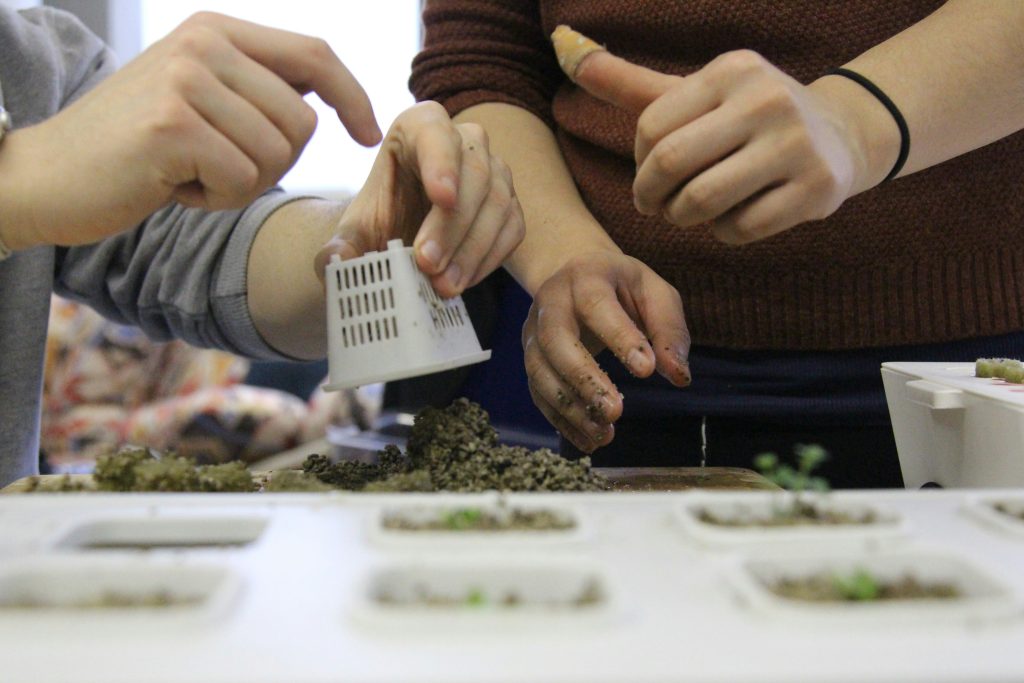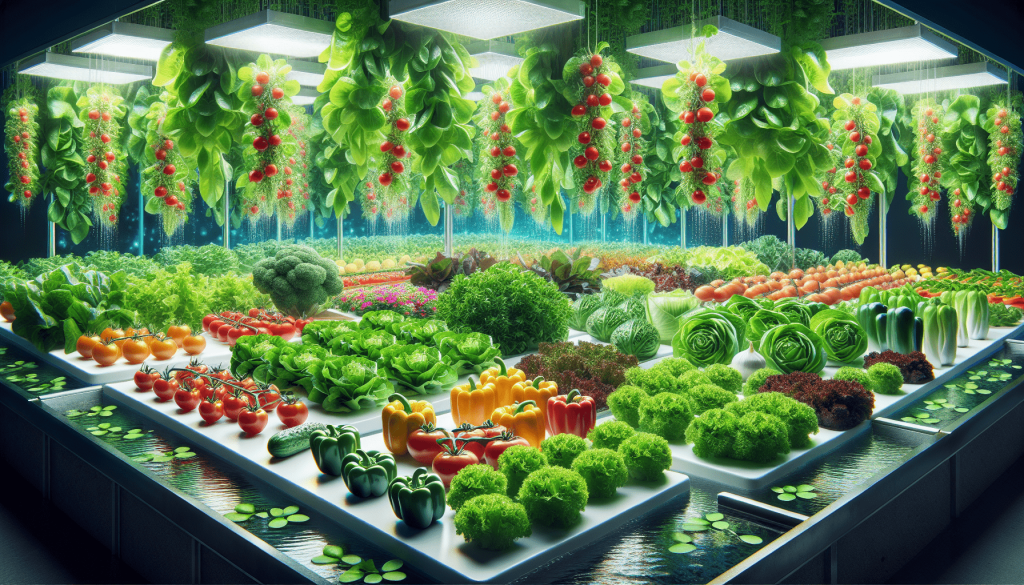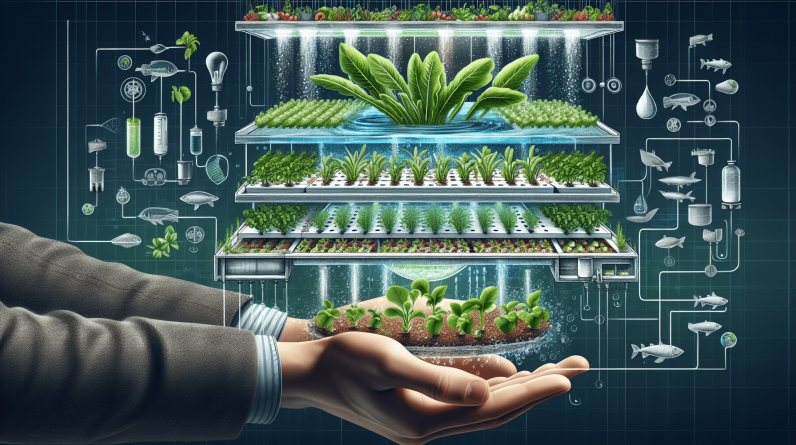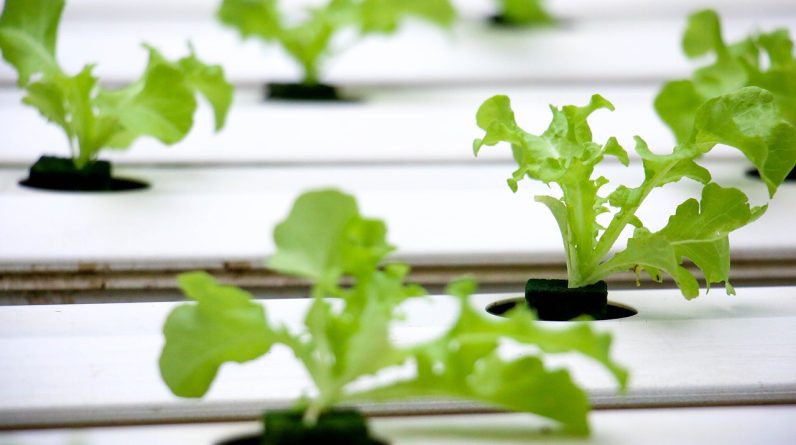
Are you looking to enhance the quality of your crops and improve your gardening experience? Look no further than hydroponic vegetable gardening. This innovative growing method not only allows plants to grow faster and produce more, but also conserves water, reduces the risk of disease and pests, and enables year-round cultivation. With hydroponics, you can enjoy fresh and nutritious crops while minimizing your environmental impact. Give it a try and discover the benefits of hydroponic gardening for yourself. Have you ever considered growing your own vegetables at home, but were deterred by the limitations of traditional soil gardening? If so, hydroponic vegetable gardening might be the solution you’ve been looking for. Hydroponics is a modern gardening method that offers numerous benefits, including faster plant growth, higher yields, and reduced water usage. In this article, we will explore how hydroponic systems can improve crop quality and help you cultivate fresh, nutritious vegetables year-round.
Introduction to Hydroponic Vegetable Gardening
You may be wondering, what exactly is hydroponic vegetable gardening? In simple terms, hydroponics is a method of growing plants without soil. Instead, plants are grown in a nutrient-rich solution that provides all the essential minerals they need to thrive. By eliminating the need for soil, hydroponic systems can deliver nutrients directly to the plant roots, promoting faster growth and increased yields.
Benefits of Hydroponic Vegetable Gardening
One of the key benefits of hydroponic vegetable gardening is water conservation. Traditional soil gardening can be water-intensive, with much of the water lost through evaporation or runoff. In contrast, hydroponic systems use up to 90% less water, making them a more sustainable option, especially in regions prone to drought. Additionally, hydroponics allows for year-round cultivation, regardless of external weather conditions. This means you can enjoy freshly harvested vegetables even in the dead of winter.

Types of Hydroponic Systems
There are several types of hydroponic systems available, each with its own advantages and drawbacks. The choice of system will depend on factors such as space availability, budget, and the types of vegetables you want to grow. Let’s explore some of the most common types of hydroponic systems:
Nutrient Film Technique (NFT)
The Nutrient Film Technique (NFT) is one of the most popular hydroponic systems for growing leafy greens and herbs. In this system, a thin film of nutrient solution flows over the plant roots, providing a constant supply of essential minerals. NFT systems are known for their efficiency and ease of use, making them a great choice for beginner hydroponic gardeners.
Deep Water Culture (DWC)
Deep Water Culture (DWC) systems are another common type of hydroponic setup, particularly suited for growing larger plants like tomatoes and cucumbers. In DWC systems, plants are suspended in a nutrient solution with their roots fully submerged. This method offers excellent oxygenation to the roots, promoting fast growth and robust plant development.
Ebb and Flow
The Ebb and Flow system, also known as flood and drain, involves flooding the plant roots with nutrient solution at regular intervals. This cycle of flooding and draining provides plants with the necessary nutrients while ensuring proper aeration of the root zone. Ebb and Flow systems are versatile and can accommodate a wide range of plants, making them suitable for both beginners and experienced hydroponic gardeners.
Drip Irrigation
Drip irrigation systems deliver a precise amount of nutrient solution directly to the plant roots through a network of tubes and emitters. This method is highly customizable, allowing you to adjust the nutrient delivery based on the specific needs of each plant. Drip irrigation systems are popular for commercial hydroponic operations due to their efficiency and ease of automation.

Essential Nutrients for Hydroponic Vegetable Gardening
In hydroponic vegetable gardening, it’s crucial to provide plants with the right balance of essential nutrients to support healthy growth and development. The following are some of the key nutrients that plants need to thrive in a hydroponic system:
Macronutrients
- Nitrogen (N): essential for leafy green growth and overall plant vigor.
- Phosphorus (P): crucial for root development, flowering, and fruiting.
- Potassium (K): important for overall plant health and disease resistance.
Micronutrients
- Iron (Fe): necessary for chlorophyll production and photosynthesis.
- Calcium (Ca): vital for cell wall structure and stress tolerance.
- Magnesium (Mg): involved in enzyme activation and nutrient uptake.
pH and EC Levels
Maintaining the correct pH and Electrical Conductivity (EC) levels is essential for nutrient absorption and plant health in hydroponic systems. Most vegetables thrive in a pH range of 5.5 to 6.5, while the ideal EC level will vary depending on the plant species and growth stage. Regular monitoring and adjustment of pH and EC levels will help ensure optimal nutrient uptake and prevent nutrient deficiencies.

Selecting Vegetables for Hydroponic Gardening
When it comes to choosing vegetables for hydroponic gardening, some crops are better suited to this growing method than others. Leafy greens, herbs, and compact fruits like strawberries tend to perform well in hydroponic systems due to their relatively shallow root systems and fast growth rates. Additionally, many vine crops, such as tomatoes, cucumbers, and peppers, can also thrive in hydroponic environments with proper support.
Best Vegetables for Hydroponic Gardening
- Lettuce: Leafy greens like lettuce are a popular choice for beginners due to their fast growth and high yields.
- Basil: Herbs like basil can flourish in hydroponic systems, providing fresh aromatics for culinary use.
- Tomatoes: Vine crops like tomatoes can produce bountiful harvests in hydroponic setups with proper trellising and support.
- Cucumbers: Cucumbers are well-suited for hydroponic growing, yielding crisp fruits throughout the growing season.
Tips for Success
- Start with easy-to-grow vegetables like lettuce and herbs to gain confidence in hydroponic gardening.
- Provide adequate support, such as trellises and stakes, for vine crops like tomatoes and cucumbers.
- Monitor nutrient levels, pH, and EC regularly to ensure optimal plant health and growth.
- Experiment with different varieties and growing techniques to find what works best for your specific setup and climate.

Troubleshooting Common Issues in Hydroponic Gardening
As with any gardening method, hydroponic systems can encounter challenges that may affect plant health and productivity. By being aware of common issues and their potential causes, you can take proactive steps to address problems and maintain a thriving hydroponic garden. Here are some common problems you may encounter in hydroponic vegetable gardening:
Nutrient Deficiencies
Nutrient deficiencies can manifest as yellowing leaves, stunted growth, or poor fruit development in hydroponic plants. To address this issue, first, check the nutrient solution’s pH and EC levels to ensure they are within the optimal range. If necessary, adjust the nutrient mix to provide plants with the right balance of essential minerals.
Root Rot
Root rot is caused by overwatering or poor oxygenation in the root zone, leading to root decay and plant wilting. To prevent root rot, ensure adequate aeration in the nutrient solution and avoid waterlogging the plant roots. Consider using an air stone or oxygen pump to promote oxygen exchange and maintain healthy root conditions.
Pest Infestations
Pests like aphids, spider mites, and whiteflies can damage hydroponic plants and reduce yields if left unchecked. To control pest infestations, regularly inspect plants for signs of damage and introduce natural predators like ladybugs or beneficial nematodes to keep pest populations in check. Additionally, you can use organic insecticidal soaps or neem oil as a deterrent against common garden pests.
Waterborne Diseases
Waterborne diseases, such as Pythium and Fusarium, can spread quickly in hydroponic systems, affecting plant roots and overall plant health. To prevent waterborne diseases, maintain strict hygiene practices in your hydroponic setup, including disinfecting equipment and replacing nutrient solutions regularly. Consider using a UV sterilizer or ozone generator to eliminate pathogens and maintain a clean growing environment.

Conclusion
In conclusion, hydroponic vegetable gardening offers a sustainable and efficient way to grow fresh, nutritious crops year-round. By providing plants with a nutrient-rich solution directly to the roots, hydroponic systems promote faster growth, higher yields, and reduced water usage compared to traditional soil gardening. Whether you’re a beginner looking to dip your toes into hydroponic gardening or an experienced gardener seeking to expand your growing capabilities, hydroponics can be a rewarding and engaging pursuit. With the right knowledge, tools, and a bit of experimentation, you can cultivate a thriving hydroponic garden and enjoy a bountiful harvest of homegrown vegetables. Happy gardening!
So, are you ready to dive into the world of hydroponic vegetable gardening and improve the quality of your crops? Let us know in the comments below your thoughts or if you have any questions about starting your hydroponic garden journey. Remember, with a little bit of patience and dedication, you can grow fresh, nutritious vegetables right in the comfort of your own home.










